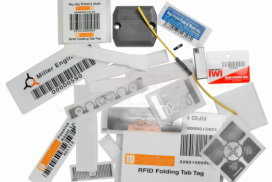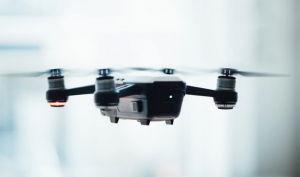GENERAL INFORMATION
This project is at the heart of the supply chain management and aims to ensure an autonomous 24/7 inventorying. The RELIEF team will design and build autonomous robots capable of moving at any (including previously unknown) place, constantly identifying and localizing all surrounding products. The robots will build a map of the unknown area and will determine the location of all the products with a precision of a few centimeters
APPLICATIONS
The main scope of products is the Logistics industry and in particular the warehouse-control and selling points control, e.g. large retail stores.
PRODUCTS
In the context of “RELIEF”, we are building two terrestrial robots, a drone and a repeater. The two robots are equipped with sensors that allow them to create a map of the environment and locate themselves in it (Simultaneous Localization and Mapping - SLAM). At the same time, they are equipped with one (or more) RFID reader(s), which constantly interrogate any RFID tag around. By properly processing the information that the tag sends, the robot determines the location of the tags and thus the location of the products that they are attached to. Similarly the drone repeats the same process, deploying a different architecture, and less precisely, as it cannot lift the weight of the equipment of the terrestrial robots...
ADVANTAGES
1Reduces potential errors during inventory. With respect to barcodes, RFIDs allow hundreds of labels per second to be interrogated, while visual contact is not required. Reading is done by electromagnetic wave emission rather than in an optical way.
2 A single moving system ensures continuous inventory (even during the operation of the store or the warehouse). Battery autonomy is expected to ensure uninterrupted operation for at least 10 hours on the ground robot.
3 Motion ensures multiple measurements from distinct positions. By appropriately exploiting this wealth of information, we can combat inaccuracies due to measurements or environmental properties and provide high precision in calculating the location of the labels in the space and thus the products.
4 Inventorying by personnel is a painful process, which is related to the burden of their health, due to the repeated movement they are asked to make and results in possible errors.
5 Motion of the robots ensure coverage of any space with a single system (one robot). The equivalent cost of monitoring with static RFID systems is prohibitive due to the short range of each antenna. Consider that each reader can control up to a distance of 5-10m, depending on the size of the labels and available antennas.
6 With the repeater, we want to increase the range of static systems without requiring the installation of a new reader. The goal of the product is to reduce the equivalent cost per cover area. A reader costs more than 2,000 euros, along with the antenna-systems that must be installed. The repeater is expected to cost about 200Euro, one order of magnitude lower.
PUBLICATIONS
We publish our findings in international conferences and journals.
RFID technology

Robots, sensors and algorithms

WHO WE ARE
Dr Antonis Dimitriou
Coordinator
Prof. Traianos Gioultsis
Scientific Responsible
Asc. Prof. Loukas Petrou
AUTH
Asc. Prof. Andreas Symeonidis
AUTH
Dr. Stavroula Siachalou
AUTH Researcher
Dr. Emmanouil Tsardoulias
AUTH Researcher
Alexandros Filotheou
AUTH Researcher
Konstantinos Panayiotou
AUTH Researcher
Anastastios Tzitzis
AUTH Researcher
Megalou Spyros
AUTH Researcher
Raptopoulos Aristidis
AUTH Researcher
Evaggelos Giannelos
TUC Researcher
Dr. Theodoros Vasileiadis
Trinity
John Karanikas
Trinity
Ioannis Mouroutsos
Trinity
ECE, TUC

ECE, AUTH



